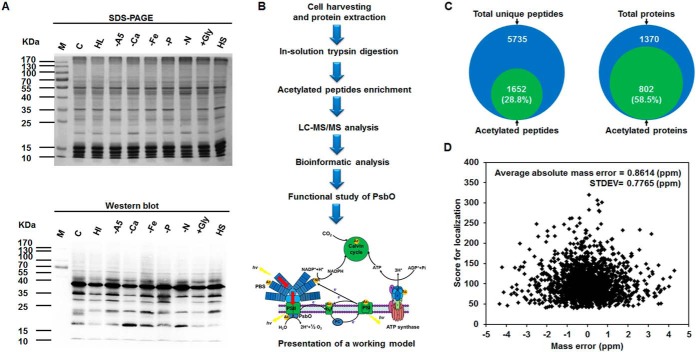Fig. 1.
Synopsis of the acetylome analysis in Synechococcus sp. PCC 7002. A, Western blotting analysis of lysine acetylation profiles with antiacetyllysine antibodies in response to different stress conditions. Equal amounts of protein lysates (20 μg) were extracted from the cells under standard culture conditions (C), high-intensity light stress for 30 min (HL), A5 deficiency (-A5), calcium deficiency (-Ca), iron deficiency (-Fe), phosphate deficiency (-P), nitrogen deficiency (-N), glycerol addition (+Gly), and high salinity stress for 30 min (HS). Coomassie blue staining of the gel acts as a loading control. B, Workflow for the acetylome analysis in Synechococcus. Proteins form exponentially growing cells were extracted and peptides cleaved by trypsin were prefractionated using in-solution digestion. Lysine-acetylated peptides were enriched using acetyl-lysine antibody and subsequently analyzed by nano-LC-MS/MS. Bioinformatic analysis and functional analysis of photosystem II manganese-stabilizing protein (PsbO) were performed. C, Pie chart illustrates the percentage of lysine-acetylated peptides and proteins compared with all identified peptides and proteins, respectively. D, Mass error distribution of the lysine-acetylated peptides.

